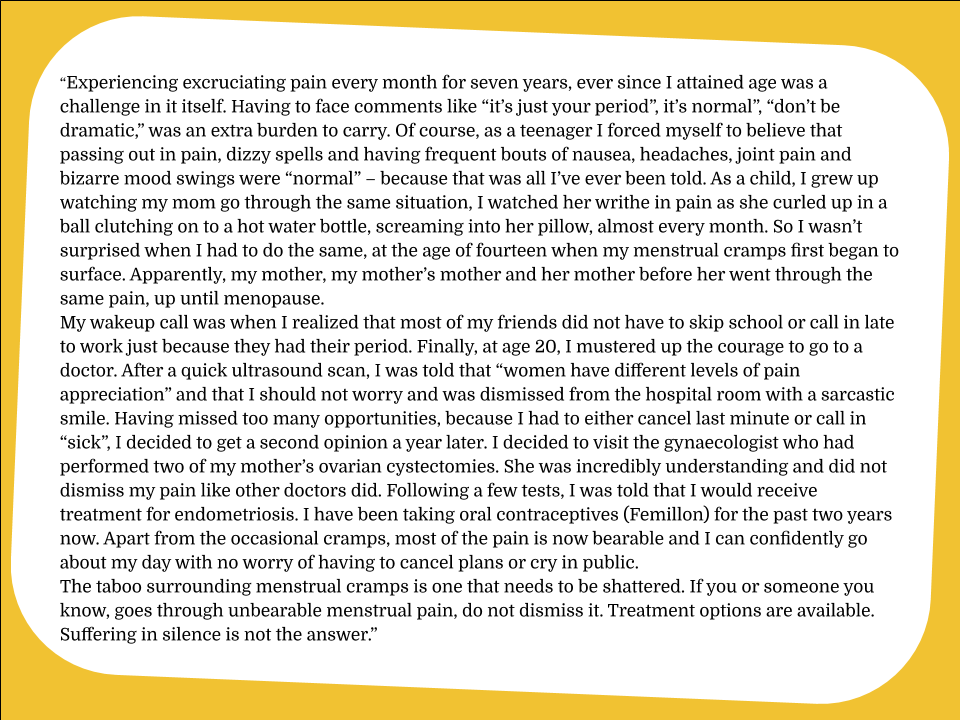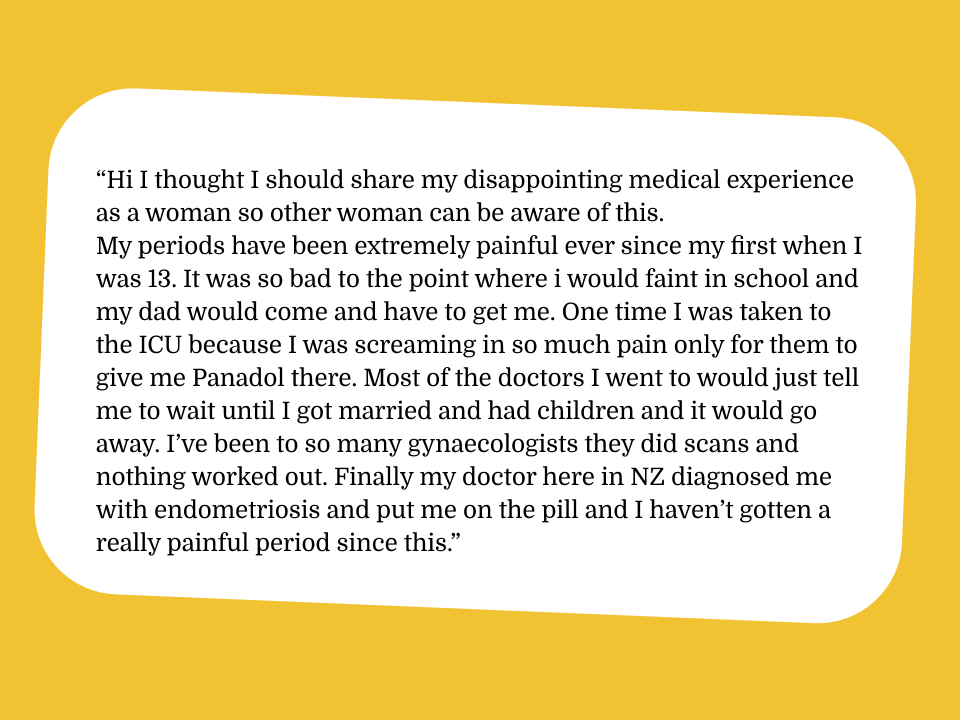It is estimated that around 176 million females (that’s one in 10!), have Endometriosis (Rogers, D’Hooghe, Fazleabas) and yet it remains a widely unrecognised, unknown condition. Here we feature two strikingly similar stories about life prior to and the obstacles to an Endometriosis diagnosis.


Status Quo
Endometriosis is a painful disorder in which tissue that normally lines the inside of the womb (uterus) grows outside of it as well.
Due to endometriosis, the excess tissue thickens, breaks down and bleeds with each menstrual cycle. However, this displaced tissue has no way of exiting the body, and while some of it may be reabsorbed, it can also collect inside the body. This can cause irritation in the surrounding tissue, eventually leading to scar tissue and excess tissue formation. The excess tissue can make the pelvic tissues and their surrounding organs stick to one other.
It is uncertain as to what exactly causes Endometriosis, but it is thought that genetic and hormonal factors have a role to play in it. This condition can cause excruciating pain (especially during the menstrual periods), fertility problems, painful sex, and when endometriosis involves the ovaries, cysts.
Problem
Endometriosis is commonly confused with ‘period pain’ and standard menstrual cramps. Doctors may dismiss the pain without carrying out tests to confirm this condition, especially if the patient is young or less assertive. Assuring them that it will cure itself after marriage and children is NOT an effective solution, especially if the symptoms are severe.
Because pain is subjective and has no visible signs, it is harder for family and friends to empathise, and for doctors to diagnose without further testing. Another problem is that Endometriosis is not always seen on an ultrasound scan. The only way of being completely certain is to do a laparoscopic investigation, which involves going under anaesthesia. A small cut is made near the umbilicus to insert a thin tube with a camera attached so that the doctor can see inside the abdomen. The doctor can then see specific areas of uterine tissue that are growing outside the uterus. This is only done in severe cases or in cases of fertility issues, because it requires the patient to go under anaesthesia and have a laparoscopic procedure.

Solutions and takeaways
- In case of intense pain during menstruation, make an appointment with a gynecologist specifically, as opposed to a general physician.
- Confirm Endometriosis by carrying out appropriate tests. However, most doctors will start treatment without making the patient undergo a laparoscopic procedure to confirm the diagnosis.
- Get a second opinion, if required.
- If Endometriosis is diagnosed, treatments are available. Being prescribed the combined oral contraceptive pill is common, this will reduce symptoms such as heavy bleeding and intense cramping. The painkiller, Mefenamic Acid, that specifically targets period pain, is also widely available in Sri Lanka. Please consult a doctor for a prescription of the above drug if you have no allergies to the medication.
- Believing those who speak up about intense pain is important, as this will lead to early detection and treatment.
Written and compiled by: Tharakie Pahathkumbura (Researcher), Tamara Jayasinghe (Mentor) and Dr. Rashmira Balasuriya (Head of Mentors) .
Referrence: Rogers PA, D’Hooghe TM, Fazleabas A, et al. Priorities for endometriosis research: recommendations from an international consensus workshop. Reprod Sci 2009;16(4):335-46.
We hope to publish stories along with a problem-solution analysis, to acknowledge and create a space to benefit those who may be experiencing unspoken medical pitfalls. To respect the privacy of those who share their stories, these quotes will be kept anonymous. If you have a story of systemic failure or concern in the medical field with regard to your sexual or reproductive health, we welcome you to share your story. Email us at contact@arkainitiative.org or direct message us on Facebook or Instagram @arkainitiative, with a word count of 200 words or fewer.

